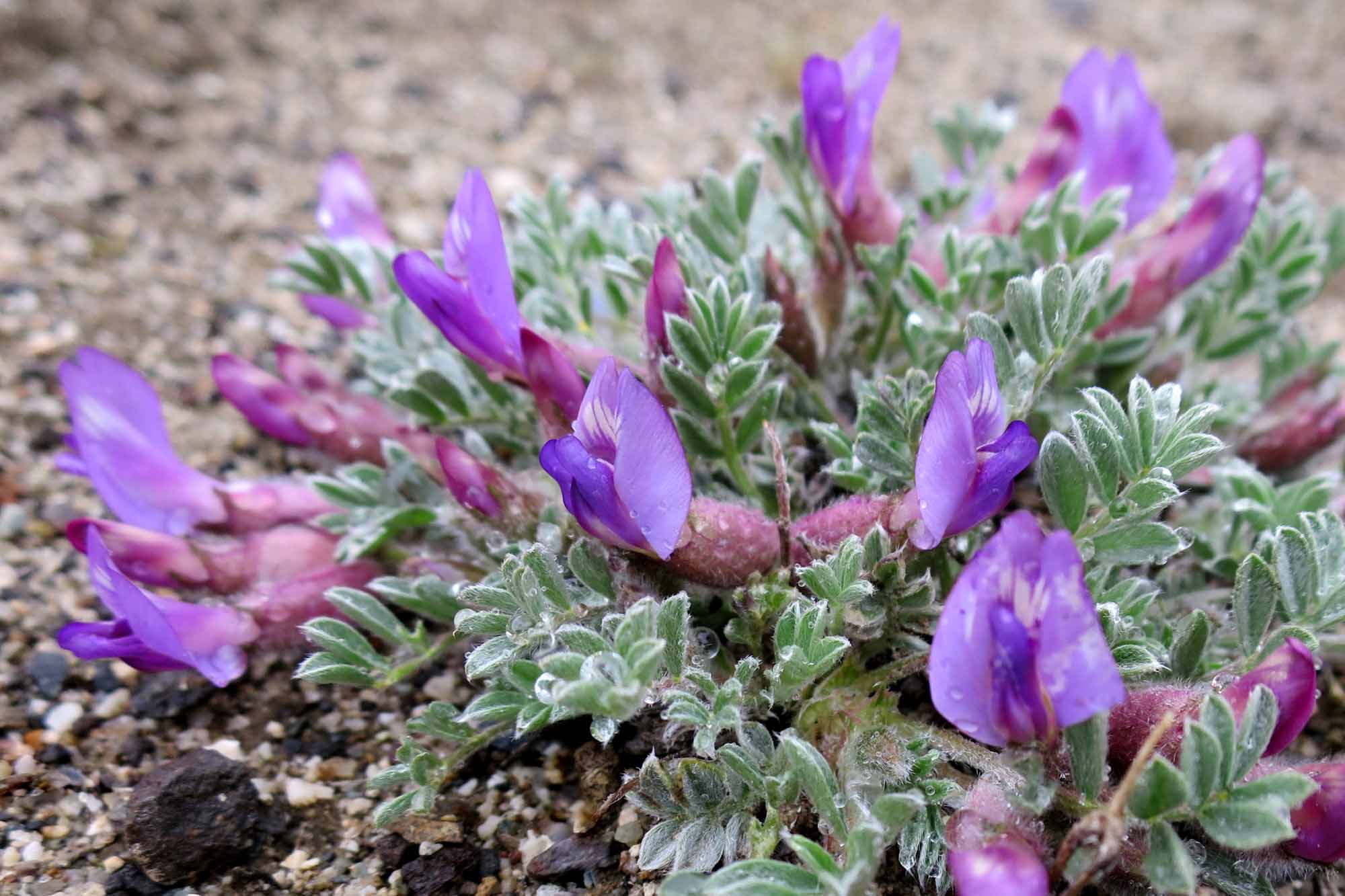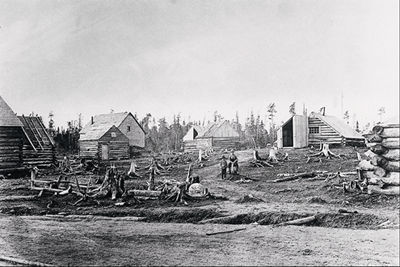Browse "Things"
-
Article
Lobstick
Lobstick (or lopstick) is a tall, conspicuously situated spruce or pine tree with all but its topmost branches stripped or lopped off. This was done by northern Aboriginal people, and later by voyageurs, to turn trees into talismans, landmarks or memorials.
"https://development.thecanadianencyclopedia.ca/images/tce_placeholder.jpg?v=e9dca980c9bdb3aa11e832e7ea94f5d9" // resources/views/front/categories/view.blade.php
https://development.thecanadianencyclopedia.ca/images/tce_placeholder.jpg?v=e9dca980c9bdb3aa11e832e7ea94f5d9
-
Article
Local Elections
Local elections are the procedures by which citizens in a community choose the MUNICIPAL GOVERNMENT.
"https://development.thecanadianencyclopedia.ca/images/tce_placeholder.jpg?v=e9dca980c9bdb3aa11e832e7ea94f5d9" // resources/views/front/categories/view.blade.php
https://development.thecanadianencyclopedia.ca/images/tce_placeholder.jpg?v=e9dca980c9bdb3aa11e832e7ea94f5d9
-
Article
Local Government
Local government is the level of government below the provinces. The most important local governments are the MUNICIPAL GOVERNMENTS. Under the constitution, the provinces have exclusive jurisdiction over municipal affairs (see MUNICIPAL-PROVINCIAL RELATIONS).
"https://development.thecanadianencyclopedia.ca/images/tce_placeholder.jpg?v=e9dca980c9bdb3aa11e832e7ea94f5d9" // resources/views/front/categories/view.blade.php
https://development.thecanadianencyclopedia.ca/images/tce_placeholder.jpg?v=e9dca980c9bdb3aa11e832e7ea94f5d9
-
Macleans
Locked up, locked out
The chief behind Canada’s first jail on reserve land pushes for more jobs training for Aboriginal inmatesThis article was originally published in Maclean's Magazine on September 23, 2013
"https://development.thecanadianencyclopedia.ca/images/tce_placeholder.jpg?v=e9dca980c9bdb3aa11e832e7ea94f5d9" // resources/views/front/categories/view.blade.php
https://development.thecanadianencyclopedia.ca/images/tce_placeholder.jpg?v=e9dca980c9bdb3aa11e832e7ea94f5d9
-
Article
Locoweed
Locoweed is the common name for plants of the genera Astragalus and Oxytropis in the pea family.
"https://d2ttikhf7xbzbs.cloudfront.net/media/media/392cbba3-2e8f-4a88-8a1a-95df502ee427.jpg" // resources/views/front/categories/view.blade.php
https://d2ttikhf7xbzbs.cloudfront.net/media/media/392cbba3-2e8f-4a88-8a1a-95df502ee427.jpg
-
Article
Log Houses
Log Houses are a form of housing structure has been used in some forms by both Indigenous peoples and earlier settlers. While some Northwest Coast Indigenous peoples used log frames for their large plank houses before European settlers arrived, log houses have long been associated with pioneer settlement, past and present (see also Architectural History of Indigenous Peoples in Canada). Canada's forests provided ready building material.
"https://d2ttikhf7xbzbs.cloudfront.net/media/media/d722a2ab-c736-4842-b454-e665edd09d59.jpg" // resources/views/front/categories/view.blade.php
https://d2ttikhf7xbzbs.cloudfront.net/media/media/d722a2ab-c736-4842-b454-e665edd09d59.jpg
-
Article
Logic, Epistemology, Philosophy of Science
Philosophy: Logic, Epistemology, Philosophy of Science Logic, Epistemology, and Philosophy of Science cover a wide range of topics and issues including, epistemology, metaphysics, scientific method, science and values, and even the history of science, since there are inevitably many philosophical and conceptual issues present in the development of new ideas. The particular sciences included in this are everything from mathematics, to the natural sciences (biology, chemistry, and physics) to the social sciences (anthropology, economics, and...
"https://development.thecanadianencyclopedia.ca/images/tce_placeholder.jpg?v=e9dca980c9bdb3aa11e832e7ea94f5d9" // resources/views/front/categories/view.blade.php
https://development.thecanadianencyclopedia.ca/images/tce_placeholder.jpg?v=e9dca980c9bdb3aa11e832e7ea94f5d9
-
Article
Logo
Logo, a symbol, mark or word used by a corporation or other organization to distinguish its products, services or identity from those of anyone else. First used in 1937, the term was originally an abbreviation for "logogram" or "logotype" (both derived in part from Greek logos, "word"). It came into general use in Canada among marketers and designers in the 1960s, and by the mid-1970s it had become, to the layman, a synonym for "trademark."
"https://development.thecanadianencyclopedia.ca/images/tce_placeholder.jpg?v=e9dca980c9bdb3aa11e832e7ea94f5d9" // resources/views/front/categories/view.blade.php
https://development.thecanadianencyclopedia.ca/images/tce_placeholder.jpg?v=e9dca980c9bdb3aa11e832e7ea94f5d9
-
Article
London and Bristol Company
London and Bristol Company, est 1610, the first formal attempt to colonize NEWFOUNDLAND. A group of merchant "adventurers" from London and Bristol, Eng, obtained a royal charter giving them title to Newfoundland's east coast.
"https://development.thecanadianencyclopedia.ca/images/tce_placeholder.jpg?v=e9dca980c9bdb3aa11e832e7ea94f5d9" // resources/views/front/categories/view.blade.php
https://development.thecanadianencyclopedia.ca/images/tce_placeholder.jpg?v=e9dca980c9bdb3aa11e832e7ea94f5d9
-
Article
London Conference
From 4 December 1866 to March 1867, politicians from the Province of Canada, Nova Scotia and New Brunswick met with delegates of the British government in London. This was the last of three conferences — after the Charlottetown Conference and Quebec Conference in 1864 — that were held to determine the constitutional details of Confederation. The Quebec Resolutions — 72 points that had been agreed upon in Quebec City — were reviewed and amended. They formed the basis of the British North America Act (now the Constitution Act, 1867). It was passed by the British Parliament and received Queen Victoria’s Royal Assent on 29 March 1867.
"https://d2ttikhf7xbzbs.cloudfront.net/media/media/9a650dcd-e8ad-4685-8baf-c4bba9cae8e7.jpg" // resources/views/front/categories/view.blade.php
https://d2ttikhf7xbzbs.cloudfront.net/media/media/9a650dcd-e8ad-4685-8baf-c4bba9cae8e7.jpg
-
Article
London Conference (Plain-Language Summary)
The London Conference took place in London, England, from 4 December 1866 to March 1867. Politicians from British North America met with members of the British government. This was the last of three conferences that were held to work out the legal details of Confederation. The first two were the Charlottetown Conference and Quebec Conference. They were both held in 1864. The Quebec Resolutions were agreed upon in Quebec City. They were reviewed and updated in London. They formed the basis of the British North America Act (now the Constitution Act, 1867). It is the foundation of Canada’s Constitution. It was passed by the British Parliament. It received Queen Victoria’s Royal Assent on 29 March 1867. This article is a plain-language summary of the London Conference. If you would like to read about this topic in more depth, please see our full-length entry: London Conference.
"https://d2ttikhf7xbzbs.cloudfront.net/media/media/9a650dcd-e8ad-4685-8baf-c4bba9cae8e7.jpg" // resources/views/front/categories/view.blade.php
https://d2ttikhf7xbzbs.cloudfront.net/media/media/9a650dcd-e8ad-4685-8baf-c4bba9cae8e7.jpg
-
Article
London Township Treaty (No. 6)
The London Township Treaty of 1796 (also known as Treaty 6 in the Upper Canada treaties numbering system) was an early land agreement between First Nations and British authorities in Upper Canada (later Ontario). It was one of a series of Upper Canada Land Surrenders. The London Township Treaty encompassed a tract of land 12 miles square (about 31 kilometres square) in the southwestern part of the colony. The British originally purchased it as the location to establish the capital of the colony, but York (modern Toronto) became the capital instead. (See also Treaties with Indigenous Peoples in Canada.)
"https://d2ttikhf7xbzbs.cloudfront.net/DundasLondonON.jpg" // resources/views/front/categories/view.blade.php
https://d2ttikhf7xbzbs.cloudfront.net/DundasLondonON.jpg
-
Article
Long-Distance Running
The marathon commemorates an event in ancient Greece; Pheidippides' run from the battlefield at Marathon to Athens (c 35 km) to announce victory.
"https://d2ttikhf7xbzbs.cloudfront.net/media/media/16a4e9f7-d172-4886-a633-bfbc2b78864d.jpg" // resources/views/front/categories/view.blade.php
https://d2ttikhf7xbzbs.cloudfront.net/media/media/16a4e9f7-d172-4886-a633-bfbc2b78864d.jpg
-
List
Longest Rivers in Canada
Canada’s rivers have played a vital role in the country’s history and cultural heritage. As transportation routes for Indigenous people and early settlers, they connected the country before railways and other modes of transportation. They have also been a source of water, food and recreation for thousands of years. Below is a list of Canada’s 10 longest rivers. The list is ordered by the river’s total length, not just the portions within Canadian borders. Similarly, the length cited is the length of the river’s main stem and does not include tributaries.
"https://d2ttikhf7xbzbs.cloudfront.net/media/media/4f133fe0-0529-435c-859e-7fc144a682c6.jpg" // resources/views/front/categories/view.blade.php
https://d2ttikhf7xbzbs.cloudfront.net/media/media/4f133fe0-0529-435c-859e-7fc144a682c6.jpg
-
Article
Longhouse
A longhouse was the basic house type of pre-contact northern Iroquoian-speaking peoples, such as the Huron-Wendat, Haudenosaunee, Petun and Neutral. The longhouse sheltered a number of families related through the female line. In the 1700s, European-style single-family houses gradually replaced longhouses as primary residences. However, longhouses still function as important facilities in which some Indigenous peoples conduct ceremonies, political meetings and various community gatherings. (See also Architectural History of Indigenous Peoples in Canada.)
"https://d2ttikhf7xbzbs.cloudfront.net/media/media/c78ecb73-d7ac-4834-bc1e-a6d6bf206331.jpg" // resources/views/front/categories/view.blade.php
https://d2ttikhf7xbzbs.cloudfront.net/media/media/c78ecb73-d7ac-4834-bc1e-a6d6bf206331.jpg
